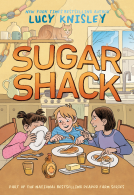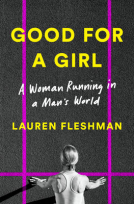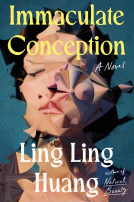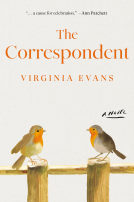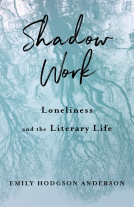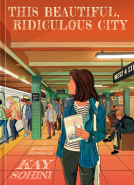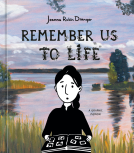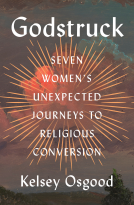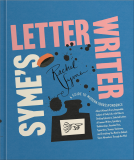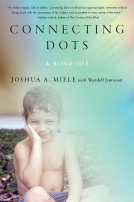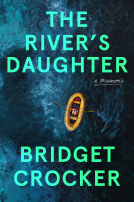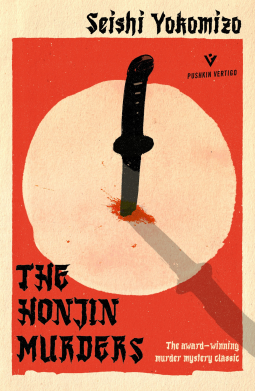
The Honjin Murders
by Seishi Yokomizo
This title was previously available on NetGalley and is now archived.
Send NetGalley books directly to your Kindle or Kindle app
1
To read on a Kindle or Kindle app, please add kindle@netgalley.com as an approved email address to receive files in your Amazon account. Click here for step-by-step instructions.
2
Also find your Kindle email address within your Amazon account, and enter it here.
Pub Date Aug 04 2020 | Archive Date Feb 11 2020
Pushkin Press | Pushkin Vertigo
Talking about this book? Use #TheHonjinMurders #NetGalley. More hashtag tips!
Description
In the winter of 1937, the village of Okamura is abuzz with excitement over the forthcoming wedding of a son of the grand Ichiyanagi family. But amid the gossip over the approaching festivities, there is also a worrying rumour - it seems a sinister masked man has been asking questions around the village.
Then, on the night of the wedding, the Ichiyanagi household are woken by a terrible scream, followed by the sound of eerie music. Death has come to Okamura, leaving no trace but a bloody samurai sword, thrust into the pristine snow outside the house. Soon, amateur detective Kosuke Kindaichi is on the scene to investigate what will become a legendary murder case, but can this scruffy sleuth solve a seemingly impossible crime?
Yokomizo is perhaps the most popular and feted crime writer in his country’s history. His richly atmospheric classic mysteries are a treat for any fan of Golden Age whodunits, taking the reader all over post-war Japan, from remote mountain villages to pirate-plagued islands and the bustling streets of Tokyo. Yokomizo loved to craft ingenious puzzle plots, inspired by the greats of British and American crime, such as John Dickson Carr or Agatha Christie, while his detective, Kosuke Kindaichi, is everything a reader could want from a sleuth: brilliant, eccentric, charming, and unassuming enough to be fatally underestimated by many a murderer. . .
Advance Praise
‘A beloved Japanese detective at last appears in English . . . If the whole series is as ingenious and compelling, this translation should be the first of many. Readers will delight in the blind turns, red herrings and dubious alibis.’ — Economist
‘The perfect read for this time of year. Short and compelling, it will appeal to fans of Agatha Christie looking for a new case to break.’ — Irish Times ‘2020 may be the year of Seishi Yokomiz0 . . . Both [The Honjin Murders and The Inugami Curse are] set in the late 1930s/early 1940s, they promise to be atmospheric, exciting and knotty whodunits. The covers alone are enough to get any fan of the genre salivating.’ — Japan Times
‘The perfect gift for any fan of classic crime fiction or locked room mysteries.’ — Mrs Peabody Investigates
‘The beauty of this book is that it’s never anything less than fun from beginning to end, but it is also smartly political, and the theatrical elements – the fourth wall-breaking, the static setting, the large cast of eclectic characters – make for a truly engrossing novel. This is, in short, a superb winter read.’ — Books and Bao ‘The Honjin Mysteries is beautifully writing and highly descriptive, rich in period detail and local custom. It’s an ingenious and deceptive mystery. An ideal book to curl up with on a winter’s night.’ — NB Magazine
'The master of Japanese crime.' — Tuttolibri** * *
Available Editions
| EDITION | Other Format |
| ISBN | 9781782275008 |
| PRICE | $14.95 (USD) |
| PAGES | 224 |
Featured Reviews
 Reviewer 618436
Reviewer 618436
Absolutely loved this! An excellent locked room murder mystery, I loved the classic Sherlock Holmes/Agatha Christie feel but in the context of Japanese culture. Can't wait to read more!
 Laura S, Reviewer
Laura S, Reviewer
I was impressed with how well the translation of this book from Japanese flowed. Explanations of certain aspects of Japanese culture of the Showa era did not seem to interrupt the flow of the story. The convention of a mystery writer recounting aspects of a true story that he had happened upon helped the story feel less awkward than it might have because many other aspects of the story needed to be explained from outside perspectives. Many points of veiw were carefully woven together using the excuse of different sources for evidence that the narrator was using in his research into the murders. The plot was wonderfully complicated with all the best characteristics of a traditional detective story. I was enthralled enough to read the book straight through, and I will look for a copy of this book in Japanese to enjoy, too
Thank you to NetGalley for an ARC of The Honjin Murders.
I love mysteries and I'm always interested to see how international authors pen; I've noticed they tend to use less filler and domestic drama and get straight to the facts.
This rule definitely applies here.
There is family drama (what family doesn't have any, in real life and in fiction), but the mystery is straight forward, the clues all laid out, and the detective, a young, schlubby version of Sherlock Holmes offers a reasonable explanation as to how the murder was devised and carried out.
I can usually guess the bad guy or how an act was carried out but this had me stumped, in a good way!
The Honjin Murders was an interesting and quick read. I always enjoy reading about Japan, its culture and people.
I hope more books by the author will be translated and released in the near future.
The Honjin Murders was a fun tale from start to finish. I was caught up in the mystery of what had happened and did not guess the full truth ahead of the final reveal. The prose is easy-going, quick reading, so I finished within two nights. The characters, though only briefly sketched in some respects, all came across as individual and memorable, and the inclusion of the visual of the house layout, with key elements marked, was a nice touch. I am not a big murder-mystery reader and requested this title more on the basis of my current fascination with everything Japanese; however, I really enjoyed reading it and would definitely pick up further books from this author.
Pushkin Vertigo are doing a fine job bringing to our attention some of the great forgotten crime novels from around the world.
The Honjin Murders is the first in the Kosuke Kindaichi novels which was originally published in 1946. The setting is an isolated rural village in Japan, the oldest son of a wealthy family is marrying, however on the night of the wedding he and his bride are murdered. The bride's uncle contacts Kosuke Kindaichi, a well known private detective whose inspiration is Sherlock Holmes, and other classic detective novels.
At the heart of this novel is the classic locked room murder mystery, when reading it you must keep in mind that this novel was written over 70 years ago. A must for fans of golden age crime writing.
 Leyla J, Reviewer
Leyla J, Reviewer
This book as my first encounter with the Seishi Yokomizo style of writing, and whilst I had a small issue with names, it soon became a book and mystery which I countn't put down easily. The story is narrated, in most, by a third person, and a retrospect style which I very much enjoyed. The solution of the mystery was reasonable, abet a little unusual. It is a locked-room mystery and it follows true to form.
I certainly will be on the look out for more of these translated mysteries.
What a delightful mystery.
I was instantly intrigued by the great cover. I had never heard of Seishi Yokomizo but a Japanese locked room mystery set during winter sounded perfect and I’m so glad I got the chance to read this novel, it’s a delight from start to finish. The tone is pleasant and light hearted, the translation by Louise Heal Kawai is wonderful.
If you love a cozy murder mystery in the style of Agatha Christie but in a Japanese setting, this is the book for you.
 Reviewer 396470
Reviewer 396470
A classic Japanese golden age locked room murder mystery, with logical but complex plotting and traditional private detective elements.
Excellent translation from Japanese into English, with attention to detail and explanation regarding specific Japanese cultural elements that built the context. It felt as if it had been originally written with translation in mind.
I really enjoyed the narrator and narrative style which utilised different points of view seamlessly.
Yokomizo Seishi (1902-1981) was a Japanese mystery novelist. He’s especially known for his series of stories featuring young detective Kosuke Kindaichi (77 total). His influence can still be seen today in many authors. Among them, Kanari Yozaburo who took inspiration for his manga (and anime) series Kindaichi Shōnen no Jikenbo (featuring the fictitious grandson of Kosuke Kindaichi) or Aoyama Gosho, author of the Metantei Conan series.
In spite of his influence, he has seldom been translated. Part of his works have been published in French, but none in English as far as I know, until now.
The Case of the Honjin Murders is the first story featuring Kosuke Kindaichi, and is considered a classic.
In 1937, at the large mansion of the Ichiyanagi family, the wedding of the eldest son and heir, Kenzo, is being prepared. Meanwhile, a strange vagrant missing two fingers on one hand is seen at a nearby village.
Several members of the family are present at the ceremony, during which the koto, a 13 string musical instrument, is played, as it is traditional in the family. The ceremony then ends with a celebration of the couple by the locals.
Later that night, a cacophony of koto and screams is heard across the mansion. Members of the family rush outside to the annex in which the couple’s bedroom is located. As it is locked from the inside, they have to force their way in, and they discover the couple brutally murdered. The katana used to commit the crime is found outside, in the middle of the garden, on a coat of snow, with no footprints around.
A perfect locked room mystery.
While the police looks for the vagrant, the late bride’s suspicious uncle calls for his protégé, young detective Kosuke Kindaichi.
The book was a great read. It has been translated in English in quite an adequate style by Louise Heal Kawai. We can feel the contagious enthusiasm of the young detective jump from the pages, and share the bafflement of the police and other protagonists while he unravels the intricate mystery.
The story is narrated after the fact by an « author of detective novels », allowing Yokomizo Seishi to introduce us to his own influences from occidental and Japanese mystery authors.
This is a book that will be enjoyed both by Agatha Christie lovers, and fans of mystery manga and anime such as those I’ve referenced above. I hope Pushkin Press will continue their effort in adapting all further entries in the series.
Thanks to Pushkin Press and Netgalley for the ARC in exchange for this unbiased review.
 Titivillus B, Educator
Titivillus B, Educator
Great to read this translation of Yokomizo’s ‘Honjin Murders’. As a fan of the golden age of detective fiction, it was enlightening to add this text to the canon, as well as it simply being a pleasure to read. I particularly enjoyed the cultural lens through which the locked room murder was enacted; koto strings and katanas rather than curtain pulls and ice picks. Well done to Pushkin Press for this gem and to Louise Heal Kawai for her fluent, compelling translation.
 Reviewer 539573
Reviewer 539573
A perfect read for this cold weather. The writing is clever and reminded me of the works by Arthur Conan Doyle and Agatha Christie. The engaging plot makes for a fantastic murder mystery.
 Jennifer W, Reviewer
Jennifer W, Reviewer
Thank you to Netgalley and Pushkin Press for the advance copy! What can I say? I love Pushkin’s Vertigo titles and this was no exception. The Honjin Murders is a classic locked room mystery in the tradition of Britain’s golden age of detective fiction. Yokomizo has a self-aware style, even going so far as to making Doyle, Christie, and Gardner a clue his detective picks up. I do think readers should go in with an understanding of the time period and culture this book comes out of. When I first started reading I wanted to shout at the author, “show, don’t tell!” But.once I got used to the style I found both the detective and the locked room puzzle delightful.
 Book B, Reviewer
Book B, Reviewer
I've found the Japanese Columbo! This is the first of the many cases featuring the scruffy looking Kosuke Kindaichi and I will definately be reading more. The translation is very good and it flows. With many cultural nuances and expressions needing some extra information, this was all included in the novel so it really didn't feel like a strict translation which was very nice.
This is also the Japanese version of Agatha Christie! A locked room mystery with the detective summing up at the end with plenty of twists and turns along the way. There are a few pointers to follow but some you only realise were pointers when you look back. Now that's clever. It was hard to guess and see where the story was going and there's not many detective novels that do that nowawdays! With the cultural differences, this was a mystery, a piece of intrigue and locked room fun all in one.
We are taken to a remote, rural Japanese village where a man of the most powerful family in the village is getting married to a beautiful young bride. However, on the wedding night, terrible screams can be heard coming from the bedroom. Once they break down the door, finding the windows still shut, they find the couple murdered in their bed. Impossible right?
The plot was quite ingenious I have to say even if it was a bit gruesome when all is said and done. It's the kind of book that you have to read carefully, try to guess and find the clues and nod to Agatha and Columbo whilst you do it.
I hope Pushkin Vertigo publishes more of Yokomizo Seishi's work in the future.
 Eric B, Reviewer
Eric B, Reviewer
Set in the winter of 1937, but first published in 1946, this is an interesting experience, providing the reader with a lot that is familiar from British and American detective fiction of the Golden Age but in a Japanese context.
An ingenious if overly complex locked room double death is at the heart of the first in what was to become a long running series featuring the Colombo-like detective Kosuke Kindaichi.
My main quibble is with the structure of the plot as, in a relatively short book, the explanation of the crime took up about one-quarter of the chapters.
Overall, a fascinating novel, with lots of insights into the social structure of pre-WW2 Japan and a chunk of homage to European and American interwar detective fiction.
The prose flows without awkwardness, so thanks to the translator for a smooth read. I will certainly look out for further instalments.
Thank you to NetGalley and Pushkin Press for the digital review copy.
An intriguing locked room murder mystery featuring a sinister three-fingered man and a wedding party full of suspects..how could I resist? In the best tradition of sleuthing novels, the dishevelled and seemingly harmless Kosuke Kindaichi shows up and piece by piece manages to unravel the plot that led to a bloody wedding night.
This is a perfect late night winter read...the snow lies deep across the ground and I picked up similarities to some of favourites, The Nightingale Floor, Columbo and Agatha Christie (who even gets a mention!)
Not a cosy mystery as such, but one that will keep you turning the pages.
 Reviewer 568403
Reviewer 568403
The Honjin Murders is a splendid intriguing mystery novel. I recommend this book highly. The setting, the detective and the era--Japan pre WWII--are uncommon in Western crime and mystery fiction. The plot is labyrinthine and complex. It utilizes Japanese history and cultural patterns in the construction of an ornate crime and the crime's resolution.. The unorthodox detective, Kosuke Kindaichi, is delightfully ingenious. Certain details of the murder are at first reading a tad outlandish--the kind of classic crime twists no longer in fashion-- but because of the skill of the writer and construction of the plot are woven together to become essential to the successful crime conclusion. The perspective of the narrator and the shifts in voice are especially effective. I look forward to being able to read more translations of mysteries by this author, Seishi Yokomizo, long celebrated and lauded--including even films made from his books-- in his native Japan but. sadly, not known in the West.
 Tamason G, Reviewer
Tamason G, Reviewer
The Honjin Murders was awarded the first Mystery Writers of Japan Award back in 1948 but for the very first time in 2020, this novel has been translated into English.
Set during the winter of 1937, we are transported back in time, to the village of Okamura and the upcoming marriage of a prominent member of the community, Kenzo Ichiyanagi. A marriage in such an imposing family is causing a great deal of excitement and gossip around the streets of the village.
Kenzo Ichiyanagi is the oldest son of Itoko and perhaps the brightest but has suffered from ill-health in the past causing him to return to his family home and become somewhat of a recluse although he does still occasionally lecture and provides guidance to those in a similar field to himself.
During periods away from home, he met and became attracted to his young bride, Katsuko, a school teacher from Okayama City. What started more as a mutual appreciation for literature soon turned into a blossoming relationship.
Unfortunately, this marriage was not destined to last, with tragedy striking the night of their wedding.
After a small wedding consisting of just a few family members, Kenzo and Katsuko head to their own little haven on the ancestral estate to consummate their marriage to one another. In the early hours of the following morning, however, guests are woken by what they perceive to be screams followed by the noise of a Koto being played. Both sides of the family rush to make sure all is ok, only to find that they can neither gain access to the property nor rouse the newly-weds.
After what seems like forever, and with no easy access to the property, Katsuko’s uncle, Ginzo, decides that they need to break in because surely if they were ok they would have responded. The scene that greets them, however, is something that I am not sure any of them are fully prepared for. Laying in front of them, entwined together are bride and groom covered in blood and no longer breathing.
Who could do such a thing? And on their wedding night?
Looking at the bloodshed in front of them, it soon becomes clear that things are complicated. For a start, it would appear that no-one has entered or left the premises. Thanks to a flurry of snow earlier, it would have made it impossible for an intruder to exit unnoticed. The difficulty, however, is that the murder weapon is outside and all the doors are locked. How could the weapon that killed the pair have got outside after both died? Someone clever must have been able to get in and out without detection, but how?
Soon the area is flooded by police but they are none the wiser which leads to Ginzo contacting the one person he believes could help.
“There was a famous and quite bizarre in San Francisco’s Japanese community that had remained unsolved for a long time. And when a certain young drug addict by the name of Kosuke Kindaichi stumbled upon the case, he succeeded in solving it once and for all.”
Kosuke Kindaichi is a young man whom Ginzo long ago saved from a life of the streets. In return for his generosity, Kosuke is extremely close to Ginzo and so drops everything to catch the next available train to help solve this crime.
Kosuke has become quite famous for the way he solves cases that others find impossible, and so when he arrives everyone is slightly shocked by his scruffy appearance and his prominent stutter. Is he really capable of solving this particular murder case?
Eager to find out the truth though, he is soon in the thick of it, seeking out unlikely clues that others have easily overlooked, asking questions that appear completely random and unrelated at times and appearing to go off on a tangent frequently.
Is he completely mad or a genius though?
With his love of mystery writers, he is soon explaining to both the inspector in charge and the horrified family that this is what is known as a ‘locked room mystery’.
“It’s what you call a murder that has happened in a room where all the doors and windows are locked from the inside. The killer had no possible escape route. Mystery writers call it ‘an impossible crime.”
Will he be able to solve this particular homicide though? Can he see what others have failed to notice?
My Thoughts on The Honjin Murders
I always worry about reading a translated text because if done badly, the whole story loses pace and any meaning behind it is lost. The Honjin Murders, however, is well interpreted. Obviously, I don’t read Japanese so I cannot tell you for certain that the novel I have read is an exact copy of the original but I appreciate the skill involved in recreating someone’s words for a new audience.
 Jessica R, Reviewer
Jessica R, Reviewer
To paraphrase the author, every mystery writer takes a crack at a locked room mystery and Yokomizo gives a master class with this one. <i>The Honjin Murders</i>, published in 1946, introduced Japan to Detective Kosuke Kindaichi, who would go on to star in a total of 77 books before the death of the author in 1981. Somehow, this edition from Pushkin Vertigo is the first time the beloved Japanese classic has been translated into English.
<i>The Honjin Murder</i>, mimicking the great Sir Arthur Conan Doyle's Watson as so many of the early classics do, is framed as a reconstruction of a case that has already been solved. In 1946 a man visiting the countryside in post-war Japan hears of a most interesting crime. Years before he stepped foot in that area of the country, in the winter of 1937, two people were found covered in their own blood in the middle of a locked two room house surrounded by snow. With no way for the killer to exit, and no one found inside, this crime appeared unsolvable despite having a clear culprit. Compiling the notes of those present with records of the events, the intrigued narrator relays how the mysterious crime at the Ichiyanagi house was solved and introduces us all to the master detective who solved the case.
Frequently referencing both great classic mysteries and some of the best locked room murders, Yokomizo was clearly a well read mystery aficionado. <i>The Honjin Murders</i> is self aware, displaying this mastery of the genre in style, plot, and a wry self referential tone. Yokomizo's straight forward writing style paired with Kawai's clean and precise translation, make this a deceptively easy read whose twists and turns manage to stay concealed until the grand reveal. Any lover of the mystery classics should be delighted to add <i>The Honjin Murders</i> and Detective Kosuke Kindaichi to their shelf.
 Reviewer 266180
Reviewer 266180
A Real Treat....
A classic mystery from the Golden Age - translated from Japanese for the first time. Classic ingredients make for an engrossing locked room mystery - a colourful cast of characters, a solid twisting plot, red herrings aplenty, an amateur detective and an ingenious solution. Completely compelling and a thoroughly entertaining, first class read. A real treat.
 Reviewer 588851
Reviewer 588851
A 1948 vintage locked-room mystery that pays homage to the classics while adding a decidedly Japanese twist to the puzzle.
The mystery revolves around the head of the Ichiyanagi family (finally!) marrying a bride below his station (yes, this is 1937, pre-WW II Japan). After the ceremonies, during the wedding night, screams are heard, along with the playing of a koto in the early hours of the morning. When the family rushes to the building, they find it locked tight, with the bride and groom slaughtered inside. Disappointed with the local police, the bride’s uncle calls in his protégé Kosuke Kindaichi, a young, disheveled, clever private detective who quickly earns the cooperation of the police and figures out the mystery.
This is Kindacichi’s first appearance, with 70+ more stories to follow. Mr. Seishi does a great job of introducing the characters and setting the scenes which could have been difficult to understand due to the cultural differences (not to mention the passage of time!). My only criticism is the narrative style that Mr. Seishi uses, that of a famous mystery author writing down the true crime many years after the fact from second hand accounts, gets a little bit distracting at times, especially when he calls out specific authors and novels, or scolds the reader for not figuring out the mystery.
But overall a great quick read. I will be looking for the remainder Kindaichi books in the future.
I requested and received a free advanced electronic copy from Pushkin Press via NetGalley. Thank you!
Interesting translated murder that reminded me of some of the classics. Closed door mysteries are always fun.
 Reviewer 418715
Reviewer 418715
A fun book, definitely worth a read. I wasn't sure what I was getting myself into, but it surpassed my expectations. I find the story well written (and translated), immersive, and entertaining. Prime reading experience.
 Jennie C, Reviewer
Jennie C, Reviewer
The Honjin Murders is part of a series of detective stories from Japan. Originally published in the 1970s Honjin Murders falls into the vane of Agatha Christie murder mysteries. It is all about the evidence that leads to the answer. It is a refreshing read in the age of psychological thrillers. While the murderer should have been obvious I did not guess it and I think that is because of the less familiar style of mystery.
One of the other unique things about this story is that it is from the perspective of the author and none of the characters. The narrative actually takes place several years after the case which adds an interesting take on it and makes you view the story from a different place. There are hints throughout and comparisons from the murder scene now to then. The hindsight view is interesting yet even with the hints I did not go there.
If you want something different in style and want to read something foreign (maybe learn a little about Japanese history and culture) definitely pick this one up.
 Swati N, Reviewer
Swati N, Reviewer
If there’s anything I love better than chocolate it’s a deliciously atmospheric crime/mystery novel. So, it is with great anticipation that I began reading The Honjin Murders by Seishi Yokomizo. To add to my excitement the locked room mystery came with a heritage. Originally published in 1946, it is the first book in the renowned series of Japanese detective stories by Yokomizo.
The Honjin Murders turned out to be quite a page turner, and I finished it in two days. With books like these it’s the journey that matters and not the destination. In other words, although I had an idea of who the murderer would be it didn’t dampen my reading pleasure. The elaborate setting, the details of family history, quirky characters, and the mere fact that this was a historical Japanese crime novel (you don’t get too many of those!) made it a really wonderful read.
Clearly, Yokomizo relishes in building layers and nuanced details as we can see from the descriptions of each of the important characters. The honjin, an inn for the well-heeled, where the story is set is also like a dynamic character, interacting with its residents and visitors in different ways. Weaving all these elements with much dexterity, Yokomizo constructs a really engaging whodunnit following in the footsteps of other famous writers like Gaston Leroux and Arthur Conan Doyle, a fact that the omniscient narrator acknowledges right at the beginning.
Yokomizo creates his own equivalent of a Sherlock or a Poirot too in the young and eccentric detective Kosuke Kindaichi. While the first half of the novel is dedicated to pulling apart the situation and surmising from various characters, the second half moves faster with Kindaichi appearing on the scene. He goes around collecting apparently unrelated titbits of information that leaves everyone around him, including the police officers, puzzled until it all comes together in a wonderful whole. I found the explanation slightly complicated but once I had figured out everything I needed to know about a koto it was better.
I thoroughly enjoyed reading The Honjin Murders and it wouldn’t have been possible without the superb translation from Louise Heal Kawai. I am waiting to read the next Kindaichi mystery soon!
A big thank you to Pushkin Press for sending me this ARC for an honest review.
 Educator 211653
Educator 211653
Thank you Net Galley. A wonderful book. A solid, old fashioned murder mystery that keeps you enthralled right to the end. Loved it.
 The Idle Woman ., Reviewer
The Idle Woman ., Reviewer
3.5 stars. These are strange times, so let's go somewhere else together instead. Somewhere like provincial Japan in the late 1930s: a world still struggling to free itself from the legacies of feudal hierarchies, in which a shocking crime offers a brilliant young detective the chance to make his literary debut. I didn't recognise Kosuke Kindaichi's name, but he has a devoted following in Japan and appeared in a whole series of Yokomizo's novels after this, his first appearance, in 1946. Unfortunately, The Honjin Murders (translated by Louise Heal Kawai) is at present one of only two Kindaichi novels available in English; the other, The Inugami Curse, is also available from Pushkin Vertigo. Let's hope that these two books are successful and encourage Pushkin to get the rest translated, because on the basis of The Honjin Murders they're going to be mind-scrambling, very entertaining classic crime stories.
The place: Okayama Prefecture. The time: November 1937. The Ichiyanagi family once ran an elegant honjin or upmarket inn for imperial couriers and noble travellers in feudal times. Now their honjin has become their home: a comfortable but isolated mansion, in which the new generation of Ichiyanagi are trying to combine modern attitudes with the deeply ingrained values of the past. Happier times are on the cards, because the middle-aged heir Kenzo - a reserved scholar - has finally decided to marry. Determined to find a woman with intelligence, he has settled on Katsuko, a well-educated schoolteacher from a modest background. While the bride's qualities aren't in doubt, Kenzo's family are horrified by her low birth - but it's now too late to do anything about it. The wedding day comes and the family gathers, with Katsuko's uncle Ginzo, to celebrate the ceremony. The newlyweds stay up most of the night drinking and mingling with the family's tenants, as is customary, and then they go to bed. Just a few hours later, the night is split by a horrific scream. When the family break into the locked annexe in which the bride and groom were to spend the night, they find the newlyweds slaughtered. There is surely no way in or out, and no footprints in the new snow around the annexe. Who could possibly have wanted to murder these two? And how can a murderer possibly have escaped from a locked room without leaving a single trace?
Inspector Isokawa of the local police is summoned to help. He slowly begins to tease out the relationships between the members of this reserved family, and to pinpoint some of the case's curiosities. For example, why was the murder accompanied by the music of a koto, a traditional Japanese string instrument (and a favourite instrument of the family). Who could have had a motive to kill Kenzo and Katsuko in such a horrible way? Who is hiding something? The stoical matriarch, Itoko? Kenzo's younger siblings Saburo, with his fascination for detective novels, or simple Suzuko, grieving for her dead kitten? What of the members of the cadet branch of the family, Ryosuke and Akiko, who also live on site? And who is the mysterious three-fingered man who came to the village shortly before the wedding, asking directions to the Ichiyanagi house? Some gruesome discoveries in the locked room soon make this three-fingered man a figure of particular interest... but Inspector Isokawa's investigations are about to take an unexpected turn. For Katsuko's uncle Ginzo has a young friend - an amateur detective, who has already made a name for himself through his brilliant deductions. Determined to solve the mystery, Ginzo sends out the word and soon Kosuke Kindaichi comes to town. He may be scruffy, distracted, excitable and certainly not the poised, respectful figure that you'd expect... but he gets the job done. And Kosuke begins to unravel a remarkable sequence of events that leads to a denouement no one could have predicted.
Now, I'll be frank: I found the solution so unpredictable that I actually found it hard to accept, but that doesn't take away from the entertainment factor. What made the book especially enjoyable, for me, was Yokomizo's endearing geekiness about detective fiction as a genre. Although he's a writer, telling us a story in that genre, he keeps breaking off to make connections to other classic crime novels - he mentions Agatha Christie, of course, but A.A. Milne's The Red House Mystery is a particular favourite. At one point, early in the novel, he playfully lists all the classic crime stories which have some similarity to the story he's about to tell us, adding - with an undoubted twinkle:
"But this real-life case wasn't quite like any of the above-mentioned. Maybe, just maybe, the killer had read a selection of stories like these, dissected all of the different devices used, then picked out the elements that he needed, constructing his own device..."
Yokomizo shares his fascination with the young Saburo, who has managed to amass a dizzying library full of every detective story published in Japan, 'both domestic and foreign', Yokomizo assures us. Fortunately, the bright Kosuke is also something of a devotee. By constantly drawing our attention to the novel's place in a wider genre of literature, Yokomizo makes a claim for himself as part of a genealogy of crime writers and cheerfully lays out his influences, inspirations and favourites. It makes the story feel rather modern and pleasantly multi-layered: a crime novel, full of digressions about crime novels, surely delivered with a wink and a smile. Yet Yokomizo's novel has a darkness and a gruesomeness to it that isn't shared by the other (British) Golden Age novels I've read. It is all bound up with the Japanese psyche, especially at that period in history, where people felt trapped between traditional values and the hope of a more open, honest future. It makes for a rather unique feel.
Certainly recommended to those who fancy trying out some classic Japanese fiction to complement the British Library's burgeoning Crime Classics series. And it also makes an interesting comparison to the modern crime genre in Japanese literature, which often shares its gruesomeness but not its knowing sense of humour. In times like these, we need a bit of escapism, and you might find that Kosuke Kindaichi's sparkling insights (beautifully translated) are just the thing to distract you from the all-too-gloomy news.
For the review, please see my blog:
https://theidlewoman.net/2020/03/19/the-honjin-murders-seishi-yokomizo/
 Elizabeth D, Reviewer
Elizabeth D, Reviewer
“Usually when people tell me these kinds of tales, they never turn out to be as interesting to me as they are to the teller, much less potential material for a book. But this case was different . . . This was no ordinary murder. The perpetrator had scrupulously planned the whole ghastly deed. What’s more, it was worthy of the label ‘Locked Room Murder Mystery.'”
The Honjin Murders by Seishi Yokomizo was first published in 1946, and is the first of many Kosuke Kindaichi novels. Now, it’s being translated into English for the first time (by Louise Heal Kawai), and fans of Golden Age mystery and detective novels should get their hands on a copy.
The story focuses on a double murder: a newlywed couple are found killed inside their locked room, with the murder weapon, a katana, outside in the snow. How did the killer get in, kill them both, and get out? Only one of the finest detectives in Japan, Kosuke Kindaichi, can figure this one out.
I was a little wary starting this book. It’s often referred to as a classic Japanese murder mystery, and I tend to dislike “classic” novels. However, I was pleasantly surprised. The translation was incredibly well done, and the flow of the writing was wonderful. I was immediately pulled in to the story, and had no problems visualizing the house where the crime took place. I was totally captivated, and the plot kept me on my toes.
The author drops hints throughout the entire story, but there are still elements of mystery throughout the book. There are enough red herrings to keep you guessing, and be skeptical of all the characters involved. Even if you’re able to figure out the twist, the atmosphere of the novel is still enough to keep you hooked until the end.
One aspect of the book that I really loved was how other mystery authors and popular books are referenced. One of the characters loves detective novels, and has a library full of books. It felt a bit surreal to be reading a crime novel that references Sir Arthur Conan Doyle (among others), and made my reading experience even more enjoyable.
The Honjin Murders by Seishi Yokomizo has been recommended to fans of Sherlock Holmes and Agatha Christie, and I couldn’t agree more. It has everything a western mystery does, but takes place in Japan instead.
Thank you to the publisher (Pushkin Press) for an electronic copy of this book via NetGalley. The Honjin Murders will be available on on June 2, 2020, and can be pre-ordered or purchased wherever books are sold.
 Abby S, Reviewer
Abby S, Reviewer
A classic murder mystery in translation.A mystery in the style of Agatha Christie & Sherlock Holmes.I will be recommending to mystery lovers .#netgalley#pushkinpress
Originally written in 1973 and translated into English for the first time, this is a novel for mystery lovers. Introducing the character of Detective Kosuke Kindaichi, The Honjin Murders is a locked room mystery that openly pays homage to the classics that inspired it. Examining the mechanics that make these novels tick, the author writes a plot that's unique, even if it follows all the rules. The characters are the weak spot, more constructs of the typical suspects than real people, but their backstories are interesting. I didn't figure out whodunit or how it was done. Some clues were obvious (on purpose) but others were unexpected. The story is also a fascinating look into another time and place. Fans of mystery novels will enjoy it profusely.
I chose to read this book and all opinions in this review are my own and completely unbiased. Thank you, NetGalley/ Pushkin Vertigo!
 Alexander G, Reviewer
Alexander G, Reviewer
Another great international mystery from Pushkin Press! They are very good in bringing solid authors from world other to English-speaking readers. This is a classic tale and a first in a series. Hopefully, more will follow.
 Janet P, Reviewer
Janet P, Reviewer
This is the first of many books b Yokomizo (77 in all) to be translated into English. It's the first in the series and a real winner. The crime was tricky (a locked room mystery) and the solution unique.
Besides having a quirky dectective, which is always fun, I loved the way the author is very familiar with Golden Age mysteries and authors. He refers to them ften and, in fact, one of them serves as part of the solution. It's also nice that, although he refers to other mysteries, he gives you enough information about them to know how they fit into the solution.
I also loved that Yokomizo combined many authorial styles in the mystery: first person narratives, flashbacks, doctor's journals,and third person narratives. It was deft and made the book more interesting than many mysteries.
I also loved that theauthor took the time to describe many aspects of Japanese life and history that would have been less familiar to his 1973 readers than to folks at the time of the murder (1937). This aspect makes them ideal for the non-Japanes writer.
I can't wait for the next one to come out!
 J F, Bookseller
J F, Bookseller
With my current fetish for Japanese crime I read The Honjin Murders and The Inugami Curse by Seishi Yokomizo back to back, which introduce the shambling, head-scratching private investigator Kosuke Kindaichi. Very much in the tradition of, and relecting the Japanese obsession with, the locked room mystery genre, both books are cleverly plotted, replete with red herrings and mind tickling twists in the narrative. I slightly preferred The Inugami Curse (trans. Yumiko Yamakazi) as the other book seemed a little more slight in its plotting, but would heartily recommend both as a sterling introduction to this author. As an aside, The Honjin Murders (trans. Louise Heal Kwai) also includes in the story a go-to list of other Japanese mystery writers which I have started exploring, and am looking forward immensely to the next Yokomizo to be produced by Pushkin Vertigo.
 Critter B, Librarian
Critter B, Librarian
Locked Room Murder Strikes Rural Japan! An English translation of the masterful Japanese mystery author Seishi Yokomizo, one of Japan's most beloved mystery writers. This sensational case marked the debut of the eccentric young detective genius Kosuke Kindaichi. *Reading this brought back many happy memories of when I lived in Japan, so I might be biased. The details, not the event!
Picture it: November 25, 1937, the rural village of Okamura in Okayama Prefecture, Japan... The scholarly eldest son of the Ichiyanagi family is marrying a young, intellectual school teacher. The wedding ceremony goes as planned, however in the middle of the wedding night, screams and eerie koto music echo throughout the mansion. The wedding couple is discovered dead inside their locked rooms, with no indication of how or why this has happened.
The mystery is baffling, the cast of characters is relatively small (though the depth of characters is hit or miss), and the atmosphere is creepy, but not terrifying. Overall a very enjoyable read, and I want to read more by Yokomizo.
 Paula Romana A, Reviewer
Paula Romana A, Reviewer
This is my favorite mystery crime story at the moment.
I'm truly grateful that this classic read was translated into English.
My attention was totally caught with the locked room murder case. How did it happen? Who killed the newly married couple?
Hands down to Detective Kosuke Kindaichi, I love how he traced the pieces of evidence, how his mind works and solve the death like a professional. Wow just wow!
Thank you to Steerforth Press and Netgalley for the ARC!
 Akylina P, Reviewer
Akylina P, Reviewer
Seishi Yokomizo is undoubtedly one of the most well renowned mystery writers of Japan. His novels are filled with the enigmas and amateur sleuths the keen readers of Golden Age mysteries have so come to love and his stories and famous detective, Kosuke Kindaichi, have had a great impact in Japanese literature and culture.
The Honjin Murders, initially published in Japanese in 1973, is Kosuke Kindaichi's very first introduction to his audience and the first of more than 30 novels featuring Yokomizo's quirky and ingenious sleuth. The novel is set in the 1930s in rural Japan, where the murder of a newly wed couple has shocked the local community. The only clues left at the murder scene are a samurai sword and the fingerprints of a three-fingered individual, while both the door and the windows appear to be locked from the inside without any traces of tresspassing.
I surely do love a well-staged locked room mystery, and this one did not disappoint in the slightest. I very much enjoyed reading about the lives of the murdered couple and the people surrounding them, and I never expected the solution that was given at the end. I also liked the mentions of various Golden Age mystery writers and some of their famous works, as it shows that Yokomizo was not only well read in the genre, but also attempted to pay homage to the works that influenced him.
The novel was marvellously translated by Louise Heal Kawai and it was a fast and suspensful read, but it is quite evident that this was one of the author's earlier works. I also found Kindaichi's backstory a bit exaggerated and hard to believe, although I do recognise that this type of story adds to his quirkiness and the mystery that surrounds him as a genius amateur sleuth.
If you are a classic mystery fan and locked room mysteries set in rural areas are your cup of tea, I definitely recommend checking this novel out. Even if you have never read a similar book before, I'm pretty sure the twists and turns of the novel's plot will keep you captivated until its very last pages.
I'm really looking forward to reading more of Kindaichi's sleuthing adventures and I do hope Pushkin Press keeps bringing them to us.
 Faith H, Reviewer
Faith H, Reviewer
“A locked room murder, a red ochre-painted room and the sound of the koto...”
Set in 1937 in a rural Japanese village, a horrible murder takes place following the wedding of the eldest son of a wealthy family. The Ichiyanagi family operated a honjin (an inn for the nobility) but when the feudal system was on the verge of collapse they moved to this small town and bought cheap farmland. This is a classic locked room murder mystery. It is the first in a series featuring the young, disheveled and stuttering detective Kosuke Kindaichi. (Think of a less pompous Hercule Poirot.) A suspicious looking three-fingered vagrant has been seen lurking around the estate and mysterious koto music has been heard in the night.
The story is related by an unnamed narrator based on what he was told by people close to the crime. It’s a very inventive plot. There is no way I could have figured out how the crime was committed, but the narrator didn’t really hide anything. In fact, at the end of the book he sets out several instances of how his careful wording should have been a clue to the reader. I would love to read more of this series, but most of the books don’t seem to be readily available in English. The author matches up well with the other authors to whom he refers in this book, including Agatha Christie and John Dickson Carr.
I received a free copy of this book from the publisher.
 Librarian 431790
Librarian 431790
An excellent locked room mystery that reminded me of a Golden Age story set in Japan.
The plot is well crafted and fascinating, the characters are fleshed out and the mystery is solid.
I found it engrossing and entertaining, recommended.
Many thanks to the publisher and Netgalley for this ARC, all opinions are mine.
In the winter of 1937, the village of Okamura is abuzz with excitement over the forthcoming wedding of a son of the grand Ichiyanagi family. But amid the gossip over the approaching festivities, there is also a worrying rumour – it seems a sinister masked man has been asking questions about the Ichiyanagis around the village.
Then, on the night of the wedding, the Ichiyanagi family are woken by a terrible scream, followed by the sound of eerie music – death has come to Okamura, leaving no trace but a bloody samurai sword, thrust into the pristine snow outside the house. The murder seems impossible, but amateur detective Kosuke Kindaichi is determined to get to the bottom of it.
What with various real-life distractions I ended up taking most of May off from book reviewing. Things have settled somewhat, and I decided it was high time to get back to reading. I have tentatively dipped my toe back into the waters of genre fiction with a Japanese period detective novel called The Honjin Murders by Seishi Yokomizo.
I’ve not read a huge amount of what you would probably call traditional crime fiction so this was a pleasant change for me. The setting and time period felt suitably evocative and I was quickly embroiled in the twists and turns of the whodunnit.
The main protagonist, amateur sleuth Kosuke Kindaichi, is a fascinating character. He is certainly not what I expected when I decided to read a Japanese detective novel that is over seventy years old. Slightly wild of appearance and prone to obvious, if somewhat inappropriate, delight when investigating. I couldn’t wait to see what this enigmatic individual would do next. His entire being feels like the antithesis of what many would picture as the reserved traditional Japanese archetype. This is particularly obvious when he brings everyone together for the final reveal of how the killings were accomplished. The members of the household are continually caught off guard by Kosuke and his singular behaviour.
Most of the remaining characters are members of the Ichyanagi family and they are a mildly eccentric bunch. I guess that makes for a perfect rogue’s gallery when you are trying to unmask a murder. Everyone could be a potential suspect.
The majority of the novel takes place in the old inn owned by the family and using this single location made it feel almost like I was watching a play unfold. The reader’s attention is deliberately driven towards the characters. The author teases with suggestions that clues are right in front of your eyes if you choose to search for them. The novel’s approach also felt reminiscent of Agatha Christie television and film adaptations that I’ve seen.
This is the first time that The Honjin Murders has been translated into English and Louise Heal Kawai deserves kudos for such a flawless job. I often worry that translated works lose some of the original author’s intent but not so in this case. The pace and execution of the narrative are perfect.
I enjoyed my first foray into historic Japanese crime fiction. It felt oddly familiar but also different at the same time. I think this is the thing I liked most about it. I’m always keen to learn about new cultures, and the novel gave me the opportunity to learn more about the rigid structures and rules that existed, and may still exist, in Japanese society. This is well worth checking out if you are looking for a crime novel that is a little different to what you are used to.
My musical recommendation to accompany The Honjin Murders has a distinctly whodunnit vibe about. The devilishly suspicious tone to the soundtrack of Knives Out by Nathan Johnson fits perfectly.
The Honjin Murders is published by Pushkin Press and available now.
Wow!! If you love a good murder mystery then this classic Japanese mystery from Pushkin Vertigo is definitely a must read for you. The story is a little eerie, the crime heinous, the sleuth scruffy-looking and the other elements present in just the right proportions to make it a great read even today years after it was first published in 1946.
The book is a locked room mystery told by a writer of Detective stories who is visiting the scene of crime years after it was committed and solved to, what else, write about it. We meet the host of characters in the wealthy Ichiyanagi family which is getting ready to celebrate the marriage of the eldest son. The setting is the year 1937 and a small Japanese village and Yokomizo gives us a glimpse of the social and cultural norms of the rural life of that era.
A rumour is also fast gaining weight while the village gossips about the wedding and family. It seems a dangerous man has been asking questions about the family,
And then it happens! On the night of the wedding, the entire household is woken by a bloodcurdling scream, followed by the sound of eerie music. A bloody samurai sword is found thrust into the snow outside the house. Soon, amateur detective Kosuke Kindaichi is brought in by the uncle of the murdered woman on to the scene to investigate what will become a legendary murder case. But can this eccentric sleuth solve a seemingly impossible crime?
The Honjin Murders is the first book to feature Yokomizo's "scruffy-looking" sleuth Kosuke Kindaichi. Making his debut in 1946. He would go on to solve more than 70 cases over the next thirty-plus years before his creator's death in 1981.
 Richard L, Reviewer
Richard L, Reviewer
I love crime fiction and nothing thrills me more in this genre than the locked room mystery. Fortunately, it appears Seishi Yokomizo also loved detective stories growing up and went on to become an accomplished author in his own right.
He is one of Japan’s most famous and best loved mystery writers. It was a joy to be given a copy of his first Kosuke Kindaichi story. The Honjin Murders also happens to be a Locked Room Murder Mystery.
The head of an aristocratic family appears to be marrying beneath his status; his future bride has secrets of her own and despite her future husband’s family lack of enthusiasm the wedding goes ahead.
But in the early hours of the next day eerie screams reveal a horrific and brutal crime. The room is completely enclosed and locked; snow has fallen and not one footprint has been made leaving the crime scene. Yet somehow a murderer has struck and disappeared in thin air.
The local police seem competent but unable to catch the main suspect. A relative of the murdered bride knows someone who can break the impasse.
Enter Kosuke Kindaichi a young man with a canny ability to reason and bring logic to a murder mystery and find solutions others overlook.
Nothing gives me more pleasure in addition to my words above than finding new detective stories, in fresh locations and from different perspectives. Sadly not all good detective novels have been translated and this is where readers should be grateful to publishers like Pushkin Press to bring an English translation of this Japanese classic. Mention should go to Louise Heal Kawai for her readable translation that made my experience with the book smooth and comfortable.
The writing flows with great energy so that the story never seems to stumble or pause. This impetus means that the pages pass quickly, you feel comfortable with the plot and characters without the need to recap or return to an early passage.
I liked the detective and the problems that confronted him at the murder scene. I smiled as he got more animated discerning clues and scratching his head to show his lifted mood and contentment. It was also clever in that the account was like a report of the events and we were being drawn into a notorious murder from a earlier time.
You don’t feel an outsider, rather a privileged member of a crime club being given insight into this mystery. Japanese culture is shared and again the writing draws you into all aspects of the story so you feel included rather than a voyeur or a witness just too far away to understand.
I was at ease as much as I when I am reading a Maigret, yet I have walked those Paris streets but never travelled to Japan.
I loved the story, the writing and the detective and hope other stories will become available and others will be encouraged to read and learn more about Japanese fiction and crime mysteries especially.
 Helen S, Reviewer
Helen S, Reviewer
A three-fingered man. A room painted all in red. The eerie music of a Japanese koto. A katana – a sword – standing blade-first in the snow. These all form part of this classic murder mystery, originally published in Japanese in 1946 and now available from Pushkin Press in an English translation by Louise Heal Kawai.
The Honjin Murders is set in November 1937 in the village of Okamura, home to the Ichiyanagi family, whose ancestors once ran a honjin – an inn where noble travellers would stay during the Edo period. Those times are long gone, but the Ichiyanagis are still proud of their illustrious lineage. At the beginning of the novel, the various members of the family are gathering for the wedding of the eldest son and heir, Kenzo, to a young schoolteacher, Katsuko. Kenzo’s family are not very happy about the bride’s humble origins, but the marriage goes ahead and everyone retires to bed for the night. A few hours later, screams are heard from the newlyweds’ room and the pair are found inside stabbed to death.
With the doors locked and no fresh footprints in the snow surrounding the building, it seems that the perfect locked room murder has been committed. Luckily, Katsuko’s uncle Ginzo knows just the man who will be able to solve it: his friend, the private detective Kosuke Kindaichi. Ginzo sends for Kindaichi who arrives in the village looking dishevelled, unassuming and unimpressive (it’s difficult not to make comparisons with that other famously untidy detective, Columbo, although this book was published decades earlier) but appearances can be deceptive and it quickly becomes clear that Kindaichi has the sort of sharp mind and powers of deduction that are necessary to solve such a complex crime.
I won’t say any more about the plot of the novel or the mystery itself. I didn’t work out how the murder was committed or who the culprit was and I was happy just to watch the solution unfold – although like another Japanese mystery novel I read last year, Murder in the Crooked House by Soji Shimada, I felt that there seemed to be more focus on puzzle solving and providing an ingenious technical explanation for the crime rather than on character and motivation. Maybe that is a common feature of Japanese crime fiction; I haven’t read enough of it yet to know.
What I particularly loved about this book was the style in which it was written, with the narrator (presumably meant to be Yokomizo himself) speaking directly to the reader and breaking off from the story now and then to discuss other classic mystery novels, especially of the locked room variety, and their similarities to the Honjin case:
"The first that came to mind were Gaston Leroux’s The Mystery of the Yellow Room and Maurice Leblanc’s The Teeth of the Tiger; then there’s The Canary Murder Case and The Kennel Murder Case, both by S.S. Van Dine; and finally, Dickson Carr’s The Plague Court Murders…But this real-life case wasn’t quite like any of the above-mentioned. Maybe, just maybe, the killer had read a selection of stories like these, dissected all of the different devices used, then picked out the elements that he needed, constructing his own device. At least that’s one theory."
Yokomizo may have drawn inspiration from some of those earlier mysteries, but The Honjin Murders itself feels original and different, as well as being a very clever and entertaining novel. Although I hadn’t heard of Kosuke Kindaichi until I read this book, it seems that he appears in over seventy novels (one of which, The Inugami Curse, is also available in English from Pushkin Press). I will look forward to meeting him again!
Kosuke Kindaichi is a detective character created by Seishi Yokomizo. The Honjin murders’ is the first book in the series of 77 books based on the same detective, Kosuke Kindaichi. This is my 2nd book Japanese mystery (the first book I read was Murder in the crooked house by Soji Shimada). Both the authors were bestsellers in their time. Seishi Yokomizo wrote between 1902-1981 and precedes Soji Shimada. Sadly, only a few of their works have been translated.
The book is a classic locked-room mystery. A crime is committed on the wedding night of Kenzo and Katsuko. But, how the perpetrator committed the crime with no point of entry or exit is the main point of mystery.
Katsuko Kobo is a school teacher. Kenzo is a nobleman. He is not interested in his family business.
Kenzo devotes his time in education and scientific discoveries.
Kenzo Ichiyanagi and Katsuko Kubo are engaged and will get married on 25th December 1937.
Itoko, the matriarch of the Ichiyanagi family, did not approve of the engagement but gave in after much persuasion.
Just around the wedding, there is a rumour about a creepy looking man roaming in the village.
On the wedding night and after a wonderful celebration, the entire family house wakes up to screams and music playing at the same time. When the police come they find only evidence, that’s a katana. Who is the murderer and, how was the crime committed?
Locked room mysteries are delightful to read. The author narrates the story. The book will remind you of Hercule Poirot or, in my case, Feluda by Satyajit Ray without the shabby hair. The book is cleverly written and the reading will scratch their head to solve the mystery. It isn’t a long book, and the book has a good pace. The author plays fair with the reader; he points out towards the end of the book.
I have Seishi Yokomizo another book, The Inugami Curse, in my TBR. I am too excited to read the next one.
Thank you, NetGalley and Pushkin Press for the copy of the book in exchange for my honest review.
 Susan D, Reviewer
Susan D, Reviewer
I not long ago read a book that I marked down a bit for being a locked room mystery. Now I am going to do an about face and say I enjoyed this example of the genre quite a bit for those rules or conventions it breaks or stretches quite widely. I found myself a willing reader as the narrator presented the various stages of the crime: characters and setting involved, set up of events and the deaths themselves. Then there is an unwinding that, for me, was well done. It was true to the characters and family involved and the information the reader was given. There were red herrings, yes, but not absurdities.
This novel was written in the late 1940s, winning the first Mystery Writers of Japan Award in 1948 and only now translated into English. This is the first of a series of an eventual 77 books featuring Kosuke Kindaichi, a brilliant, young, somewhat disheveled detective. I would read more of this series if they became available.
A copy of this book was provided by the publisher through NetGalley in return for an honest review.
 Diane H, Reviewer
Diane H, Reviewer
Armchair detectives, rejoice! The Honjin Murders has an ingenious puzzle to solve with fair clues and sneaky red herrings aplenty.
“A locked room murder, a red ochre-painted room and the sound of the koto...” The Honjin Murders is the first (of 77!) in a famous series of Japanese detective novels. It was published in 1948 making it a silver-age era mystery but with a deliciously different perspective.
An extended Japanese family is living at a large rural compound. The eldest son, Kenzo, is preparing to marry the middle-class Katsuko over his family’s strong objections.
After the wedding, Kenzo and his new bride retire to the annexe. Later, screams are heard in the night along with the playing of a koto. The family rushes to the annexe only to find it locked. After breaking in, they find the couple dead from stab wounds. The weapon, a katana, is found stuck in the snow outside.
Three bloody fingerprints are found matching a bum who had recently come to town. But how had he killed the couple in a locked room leaving no footprints in the deep snow outside?
I loved the Japanese setting. I learned quite a bit about Japan’s culture and history. The private detective, Kosuke has a smart and logical brain hidden behind his stammering and rumpled exterior. However, the cleverness of the murder method, the effectiveness of the red herrings, and the clear clues seen only after the stunning reveal are what made me love The Honjin Murders. 5 stars!
Thanks to Pushkin Press and NetGalley for a copy in exchange for my honest review.
Originally published in Japan in 1946, The Honjin Murders was first translated into English last year and is now available in the United States.
Kenzo Ichiyanagi and Katsuko Kubo, despite opposition from Kenzo’s family, become engaged, and though the wedding is a small affair, the small town is excited by the nuptials. By the time the couple serves the members of the community and completes the saki ceremony, it is after 2:00 a.m.
Within three hours, the guests and residents of the Ichiyanagi home hear koto music and screams from the annex, where the couple had retired. The annex is locked, the shutters closed, and no footprints lead away from the building. When the family is finally able to enter, they find two dead bodies awash in blood.
The narrator, a mystery writer, delights in presenting the locked room mystery. The first few chapters are explosion around the characters and property, important details, but not as interesting as the introduction of quirky Kosuke Kindaichi, a young private detective educated in United States with the logical mind of Sherlock Holmes and Hercule Poirot.
Seishi Yokomizo, a prolific writer who loved reading mystery novels, completed seventy-seven Kosuke Kindaichi works along with other books. The Honjin Murders won the first Mystery Writers of Japan Award in 1948.
I love reading mystery novels from other countries, and while The Honjin Murders has similarities in structure to Agatha Christie’s books, I was particularly pleased to read it because of the dastardly plan devised by the killer but also because of the plethora of Japanese cultural and social norms depicted.
I recommend The Honjin Murders for fans of classic mystery novels as well as those who are interested in reading non-Western mysteries.
Thank you to NetGalley and Pushkin Press for providing an advance reading copy in exchange for an honest review.
The Honjin Murders is the first Kosuke Kindaichi story and was followed by another astounding 76 books, many of which were adapted for stage and television in Japan. It was first published in 1946 and thanks to publishers Pushkin Press and an on target translation by Louise Heal Kawai we can now read the Japanese crime classic in English.
One snowy winter night in 1937 in the village of Okamura the affluent Ichiyanagi family is struck by a terrible tragedy when one of the sons, Kenzo and Katsuko, his new bride, are brutally murdered on their wedding night.
Full review on my blog: https://wanderingwestswords.wordpress.com/2020/08/04/the-honjin-murders-seishi-yokomizo/
 Melissa M, Reviewer
Melissa M, Reviewer
Such a fun mix of golden age murder mystery with a Japanese post-war setting! I enjoyed the cultural vacation.
 Nelda B, Librarian
Nelda B, Librarian
What many believe is the best Japanese mystery story is now available in English. The author Seishi Okomizo died in 1981 and the book was originally published in 1946. It is a short novel remarkably similar to the locked room mysteries of Agatha Christie. A wealthy family, the Ichiyanagi family is a proud high-class family and on the eve of their son’s wedding, the son and fiancé are murdered. Nothing is left but a handprint in the snow and a bloody katana. Sometimes compared to Japan’s Sherlock Holmes, I found Kosuke Kindaich, the eccentric detective brought in to solve the case far more human than Holmes.
First published in Japan in 1946; published in translation by Pushkin Vertigo on August 4, 2020
The Honjin Murders is a classic Japanese locked room mystery, first serialized in a Japanese magazine in 1946. When the mystery baffles the local police, a brilliant young detective is called to the scene and promptly solves the puzzle. The novel marks the detective's first of more than seventy appearances in Seishi Yokomizo's work. The detective is also a character in five Japanese films.
The story is set in 1937. Kenzo is the current master of the house of Ichiyanagi. Before the shogun was overthrown and the imperial government restored, the house was an inn for travelers who belonged to the nobility (a honjin). Nothing is more important to the Ichiyanagi family than being descendants of the owners of a honjin.
Kenzo and Katsuko were married in Kenzo’s home. Kenzo was about 40. His bride was about 25 and (to her shame) not a virgin, a confession she made just before the wedding. A scarred man with three fingers on his right hand inquired about Kenzo while passing through the village on Kenzo’s wedding day.
The post-wedding sake ceremony lasted all night. It was after midnight before Kenzo could take his new bride to their bedroom. Two hours later, a blood-curdling scream is heard. Kenzo’s family broke into the locked room and discovered that both had been hacked to death, apparently with a sword. The murder weapon disappeared with the killer, but how did the killer enter or leave a room that was locked from the inside?
Bloody three finger handprints point three fingers of guilt at a possible culprit, but that doesn’t solve the mystery of the locked room. Other characters who might be murder suspects are primarily Kenzo’s family members, including his mother and four siblings. His youngest brother is the family’s black sheep while his youngest sister is a bit simple. The sister has just buried a dead cat, which is apparently an ominous circumstance in Japanese mythology.
The stringed instrument known in Japan as the koto figures into the plot, in part because “the eerie strains of a koto being plucked with wild abandon” are heard just after the scream. A letter and a photo album that contain the words “My Mortal Enemy” provide another potential clue. Deciding which clues are real and which are red herrings adds to the fun, but to Seishi Yokomizo’s credit, none of the potential clues are completely extraneous to the story. Everything fits together and contributes to the mystery’s solution.
The police inspector, unable to make headway, summons Kosuke Kindaichi from Tokyo. Kosuke is unkempt and speaks with a stammer, but in the tradition of eccentric detectives, he pieces together obscure clues with ease. When Kosuke notices that the home’s library is filled with detective novels, he offers some literary criticism, expressing a preference for locked room mysteries that do not rely on a mechanical trick over those that do. Kosuke is a particular fan of Leroux’s Mystery of the Yellow Room and the locked room murder mysteries of John Dickson Carr.
The story is clever and complex, as good locked room mysteries tend to be. I probably miss the nuances of Japanese mysteries, having not grown up in the culture, but the unfamiliarity of the setting is part of the appeal of Japanese fiction. I doubt anyone will guess how the murder was committed. It may be possible for astute readers (and I’m not one of those) to puzzle out why it occurred. Whether the novel surprises the reader or not, following Kosuke’s deductive chain as he assembles the clues is fun. The Honjin Murders would be a perfect addition to the shelf of any devoted fan of locked room murder mysteries.
RECOMMENDED
A closed room murder mystery set in rural Japan in 1937. A couple are found dead on their wedding night and police are baffled as to how the murderer escaped the scene. There are several clues which deepen the mystery. But then a young private detective is summoned whose skills in logic and deduction are unsurpassed.
The story is narrated by a crime writer, drawing on different testimonies to piece together events as they happened. There is much mention of English crime writers of the golden age and clues to the mystery lie in some of the titles cited. Echoes of Holmes are obvious in the character of the private detective.
Entertainingly told and beautifully translated, this book is both easy to read and most entertaining. There is no flab in this text as the writing is pleasingly concise. Some Japanese words with no direct equivalence in English are left untranslated. Even if readers are not tempted to investigate these words further, there is no loss of understanding.
The first of a series of 77 novels! Hopefully, translations of other titles in the series are in the offing.
A newly married couple are murdered on their wedding night within hours of the final sale ceremony. The problem is, how did the killer escape? There are no prints in the snow, no signs of escape as every entryway is locked. Police are baffled until the uncle of the bride brings in an unorthodox private detective to investigate. Thus starts the classic locked room mystery of The Honjin Murders.
I won't say much else about the plot as not to give it away. This was a fun and entertaining read with nods to both Agatha Christie and Sherlock Holmes.
The narration took a little getting used to, but that soon wasn't a problem. I found the main character likable and well rounded. I was completely surprised by the ending. This is book one of the series and I'm hoping more of the 77 book series will be translated in to English.
Thank you to Pushkin Vertigo and NetGalley for gifting me a digital copy of this book in exchange for my honest review.
 Account D, Reviewer
Account D, Reviewer
i'm glad this book was translated to english, this was a great read. It was suspenseful and had great characters. I had a lot of fun reading this book.
Translated into English for the first time this is a classic “locked room” mystery with fascinating insight into another culture, plus an intriguing puzzle at the heart of it.
The family drama is central to the puzzle and this has all the hallmarks of Christie with some involving prose- kudos to the translator who makes it flow beautifully along keeping you hooked in and wanting to know the solution…
Which when it comes is cleverly satisfying.
Very enjoyable, another great translated novel from Pushkin.
Recommended.
An excellent Agatha Christie type murder with an impossible locked room murder in the Japanese village of Okamura. The ichiyanagi family the local rich landowners who lived their lives by tradition. Kenzo’s marriage to Katsuko not from the correct lineage was controversial but was going ahead. It would be a wedding night to remember. There is a narrator taking you through the investigation and reveal in the Poirot manner. It is an excellent take on the locked room mystery and will keep you enthralled for hours.
I voluntarily read and reviewed an Advance copy of this book. All thoughts and opinions are my own.
 Liz T, Librarian
Liz T, Librarian
The Honjin Murders is another great mystery classic published by Pushkin Press as part of their Vertigo series. This locked-door mystery draws inspiration from other famous authors of the time, such as Gaston Leroux, whose works have also become classics. Until the very end, author Seishi Yokomizo keeps the reader hooked on finding out how exactly the impossible crime played out, in all of its precise detail.
I always like Pushkin Vertigo's mystery titles. This one is very technical (like Murders in a Crooked House) and so requires a bit of effort and concentration.
 Laura H, Reviewer
Laura H, Reviewer
I received an ARC of this book thanks to NetGalley and publisher Pushkin Press in exchange for an honest review.
This was the first Japanese murder mystery I'd ever read, and I wasn't sure how I would feel about it. I tend to be a 'married to Agatha Christie' girl in terms of my mysteries, but I am so glad I branched out here.
The Honjin Murders is a fascinating tale of a newly-wed husband and wife, who both die violently on the night of their wedding. Just days before, a mysterious man was seen outside the house. The Ichiyanagi family are rich and proud, and adding to the mystery is the fact that the room the deaths occurred in appears to be locked with no way for a murderer to escape.
This book was an absolute joy to read. The writing/translation is fantastic and very entertaining. I loved the characters, particularly the detective Kosuke Kindaichi. The chapters are short and quick to read, which means it has a similar pacing to a Christie book. The mystery itself is very intriguing, with the surrounding characters and clues making for an enjoyable time.
I absolutely recommend this book if you are a fan of the genre. I have subsequently read almost all the translated books by this author, and they are all brilliant reads. I am so glad this book has been chosen for translation, and I can only hope more will follow.
Overall Rating: 4/5 stars
Readers who liked this book also liked:
Ling Ling Huang
General Fiction (Adult), Humor & Satire, Multicultural Interest
Joanna Rubin Dranger
Biographies & Memoirs, Comics, Graphic Novels, Manga, History
